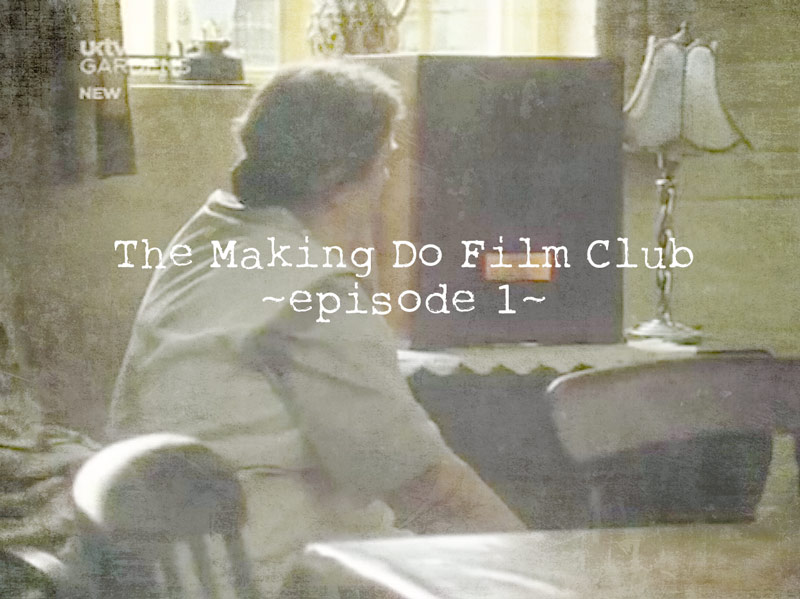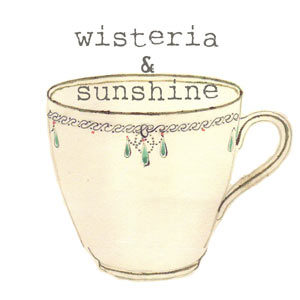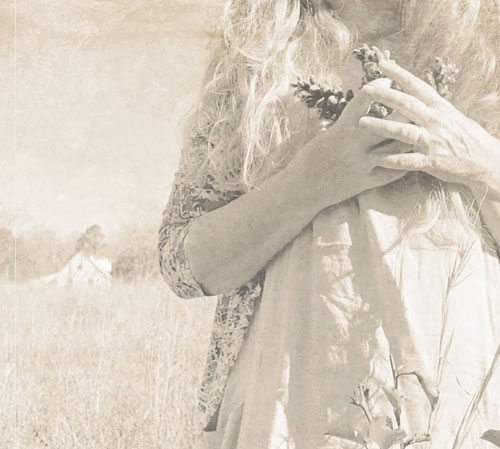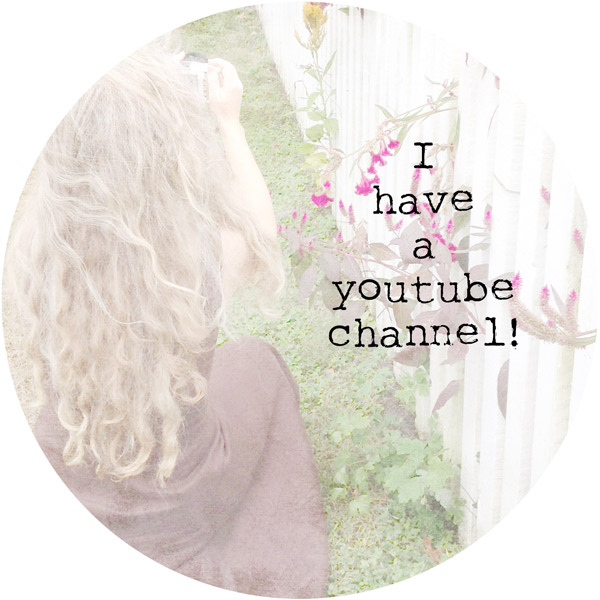
Our film club begins! For our first “film” we will be watching the first episode of The Wartime Kitchen & Garden. Each week, we will watch and have a conversation about an episode (and all it brings up, of course.) In future, I will post these notices on Sunday and the conversation will happen in the comments. Please don’t wait for me if you have a response to the episode! The conversation will begin with the first comment and the rest of the week will give us the opportunity to join in.
As I shared in one of the first posts, these videos have influenced me more than anything else in making the connections between our everydays and all that is out of rhythm in the world. Much of what we hear about in the “greener living” realm are…alternatives to plastic versions of something…or reducing packaging…and sometimes (often?) are still focused on buying stuff, just less problematic stuff. That is important.
Making Do is about wanting and needing less and that is what these videos are so good at showing us. In the videos, it is the war and all of the changes and limitations it brought that spurred their Making Do. It was law then, and overseen by larger powers. Our Making Do is not regulated, not required, overseen only by our own concern, our own hearts. But by choosing to make do, in company, our changes and limitations can bring about the positive outcomes they experienced during the war…which it is time to learn more about!
Let the watching and commenting begin…




tonia October 22, 2019 at 1:41 pm
I watched these a few weeks ago and they are really helpful. I just wish they were longer! I’m going to try and rewatch so I can keep up with the comments as we go. Thanks for pointing me to them originally!
Cathy October 22, 2019 at 6:41 pm
Last winter I watched all the episodes and thoroughly enjoyed them. And I do believe watching them had an impact on my thinking, especially realizing how the past two decades of our current culture (what it considers important) has influenced my life on the downside. I do believe I am going to appreciate the opportunity to watch them again and participate with the ongoing conversation. Thank you dear Leslie!
lesley October 24, 2019 at 10:40 am
Yes, it was watching these that awakened me to the conditioning we all can’t help but receive, unless we live in some removed, rarified way. And then, happily, I realized that these videos (and certain books and people and more) can help to uncondition us…
Anna October 22, 2019 at 9:17 pm
What struck me as I watched the first episode again (after watching the whole season last week, and then watching The 1940s House), was how it was all possible because of organization on a grand scale. I have been blown away by how much food I can grow in my small suburban back and front yards, which are 75% of the way towards being converted to (mostly veggie) garden beds and the beginnings of a food forest. Imagine if all the houses on my street converted their yards to food-growing, we planted fruit trees in place of new street trees, and the raising of chickens, rabbits, fish, and other small animals was encouraged instead of highly regulated to minimize any possible disturbance for the neighbors.
I was also interested in the comment that people had a bit of time at the beginning of the war to convert their gardens to veggies before the rationing began. I feel like we are in that period now of knowing we need to make drastic changes before food systems, etc. are noticeably compromised (from my experience outside Boston, USA).
lesley October 24, 2019 at 10:46 am
Yes, I had the same thought, Anna…that we have a window, too.
I love to imagine what you offered and am always heartened when I hear of these things becoming more common in town and city. Do the people in your neighborhood express any interest in what you are doing?
I’ve been wishing we could come up with a more pertinent alternative to a “victory garden.” Then we could make signs to let people know what is going on. If you know about Mary Reynolds and her “We are the Ark” movement, the placing of signs in the gardens and yards that are being rewilded is an important part of it…both to let people know why it looks “different” and to spread the idea.
Anna October 24, 2019 at 9:13 pm
Oh, that’s such a wonderful idea to create a sign for the garden! I really should do that so people can read more about why my whole front yard is garden (and little do they know the back yard is almost entirely garden too). I tend not to explain the “why” to my neighbors as much as I should. I do have one neighbor across the street who loves gardening, although she’s moved away from growing food in retirement. She gave me so many plants from her garden when we moved in and I have reciprocated as much as possible. Anyways, it turns out my mentioning an Extinction Rebellion event prompted her to attend too, and so I hope we will attend more climate activism events together. I don’t think she’d go back to growing food though unless there were a strong need.
I have been mentioning my fruit tree growing plans with one of our next door neighbors and she did say that she would like to make a raised bed for veggies next to our property line, so perhaps my gardening has encouraged her?
I also met another neighbor one street over who has a peach tree and beautifully wild veggie garden that is mostly not irrigated. We picked her peaches while she was away (with permission of course) and I am hoping to get to know other neighbors with fruit trees in their yards for possible food swaps in the future.
My husband jokes that once I’m done converting all my own yard to gardens that I will have to go around the neighborhood converting other people’s yards to gardens too…
Jenn October 23, 2019 at 11:02 pm
Thank you for starting this film club! It really makes me think of how little time and effort go into feeding ourselves these days (at least my “busy” family!) and how much mindfulness around food is lost due to so-called convenience. It is interesting that it took a world war to spur this movement, and it seems like something drastic would have to happen now to inspire many to change their consumption habits, unfortunately.
This series brings to mind another called Tales From the Green Valley. A group of historians live on a farm as if it were the 15th century, living with only the technology that was available then. It’s a wonderful look at how much time was spent growing/raising/preparing our food, and how closely humans were connected with the land and seasons. It’s on youtube too.
Thanks again for recommending The Wartime Kitchen Garden. Can’t wait to watch more.
lesley October 24, 2019 at 10:50 am
I agree, Jenn, that it does seem as tho’ something drastic will be required to make a huge difference, but we never know, it really just takes the right people in places of power to make changes more quickly than our smaller ways. Do you know that in Rwanda, they outlawed plastic bags years ago and have a vision and plan for plastic becoming a rarity there?
Anna October 24, 2019 at 9:15 pm
Oh, I will have to check out that series too! Your description reminds me of a show I really enjoyed called Tudor Monastery Farm, also available on youtube.
lesley October 24, 2019 at 11:11 am
This was so good to watch again. Peaceful. what struck me most was that Britain at the start of the war was importing 60% of their food! What a shift to have to make quickly, to grow and raise their own.
I looked up stats for the US now and there was so much conflicting information. Tho’ it is clear that seafood is 75-80% imported, fruits are nearing 50% and vegetables a bit less. It would seem that many imported foods come to us all ready to eat. The most distressing information was about how much is shipped by air…the worst for carbon emissions.
It took the U-Boats preventing the imported food reaching Britain to show them what had to change. Nothing will “show” us, but thinking about it more, making the connections helps it all to sink in for me. Of course, I think now, an apple from Argentina is being flown or sent by boat-and refrigerated-so bad for the earth.
Even if we are not growing more of our food ourselves, in our own gardens, the answer to restoring a sane and healthy level of importing food is to try to source our food as locally and regionally as possible. I’ve begun by only buying produce grown in the U.S…weaning myself off almond butter and switching back to organic peanut butter (peanut growing regions are closer to me and don’t have all the environmental issues almonds do) and seeking out local fruit and veggies to store. I’ve tried not to buy out-of-season produce for a few years now. We use more frozen and dried fruit than we used to. And like Anna, I want to grow more and more of our own.
The home front back then had the urgency of rediscovering old ways thrust upon them. In our new home front, we have been learning of the problems piecemeal, over the years, and the urgency is more hidden, but there all the same.
lesley October 24, 2019 at 11:25 am
P.S. And wasn’t the Christmas morning scene so low-key? Wonderful.
Anna October 24, 2019 at 9:20 pm
Every year our Christmas gets a little more low-key and it’s truly wonderful. Now that we’re hosting Christmas at our house, I finally have more control over how busy and extravagant it is. My parents go all-in for Christmas, so it’s a work in progress. This year my goal is to minimize the gift giving even more, especially for Iris and Linden, who truly do not need more toys. I just need to think of some good toy alternatives that they could actually use. I’ve also been saving small draw-string fabric bags to wrap gifts in, although I still have a little tin of used tissue paper for anyone who prefers that method.
Laurie A October 24, 2019 at 2:40 pm
I enjoyed watching Wartime Kitchen & Garden again. I watched anything I could find like this a few years ago. We grow a good portion of our food, but I’m also grateful to be able to easily buy food, in light of the inevitable failure of some of the crops each year. I’ve often thought what it must be like to have to solely rely on what you’ve grown.
In the past couple of days, I’ve come across a couple of things that I feel are in the spirit of the Make Do & Mend the Earth. First are short episodes on youtube, called Fairyland Cottage, about living simply. Though earlier episodes have some good information, more recent ones show her quiet and peaceful days, which I’m especially enjoying. The second share is a book, called They Made Do, which can be bought, but you may also follow the link towards the bottom of the page linked below, and view 37 pages of it for free. http://asimplelife.mybigcommerce.com/they-made-do-hardcover-book/
Anna October 24, 2019 at 8:57 pm
Thank you so much for these additional resources! The book was very inspiring to look through (the 37 free pages, that is) and I will try watching the show as well.
I have a similar feeling about gardening. We have very little space, so we will never be self-sufficient, but I’m trying to fill in the gaps left by our local organic community farm and farmer’s market. For us, those gaps are early spring (when the farmer’s market is closed for 5 weeks) and fruit in general. I also like growing things that might be too expensive to buy as much as I want to eat them: garlic, tomatoes, herbs, peas, and green beans.
lesley October 25, 2019 at 12:49 pm
All of the people I know of who try to grow most of what they eat (just produce, tho’) seem to have to make it a career…not possible for most of us. But it feels right to do what we can, and even that is quite challenging!
Funny you should mention Fairyland Cottage, Laurie. I’ve been trying to come up with a simple enough for me and not too overwhelming for everyone-way to share resources (and I believe I am nearly there) and the first thing I wanted to share was this youtube channel.I only discovered it a month or two ago, but now have a ritual of listening to the newest post (and glimpsing) while I do my morning exercises. The one she made a few weeks ago was just perfect for us. She (is it Niamh?) often used the word “resourcefulness.” It is such a good word, and practice to hone.
Mardell October 25, 2019 at 10:23 pm
Well that’s a beautiful episode! Thank you! Got all teary eyed because that’s how I was raised mostly. My mother didn’t let one chokecherry go to waste. Everything was used. And saved. I’ll never forget her comment to me one day when she was elderly and I was encouraging her to throw something out. “ You just haven’t been poor enough”. I think of that a lot. We take so much for granted. Where is the line between tossing/minimalism and saving every plastic bag and scrap of paper because you can use it sometime?
lesley November 4, 2019 at 9:14 am
I am not sure, Mardell, but I am trying to walk it. I keep the junk mail (that I just can’t seem to stop no matter how I try) and off prints from my studio for a long while, hoping I will get around to making paper with them…but I don’t. That’s why I most want to keep the dilemma-producing stuff from entering my sphere, as much as possible. No tossing, no stashes to deal with, no minimalism…just living more appreciatively and cherishingly, you know?